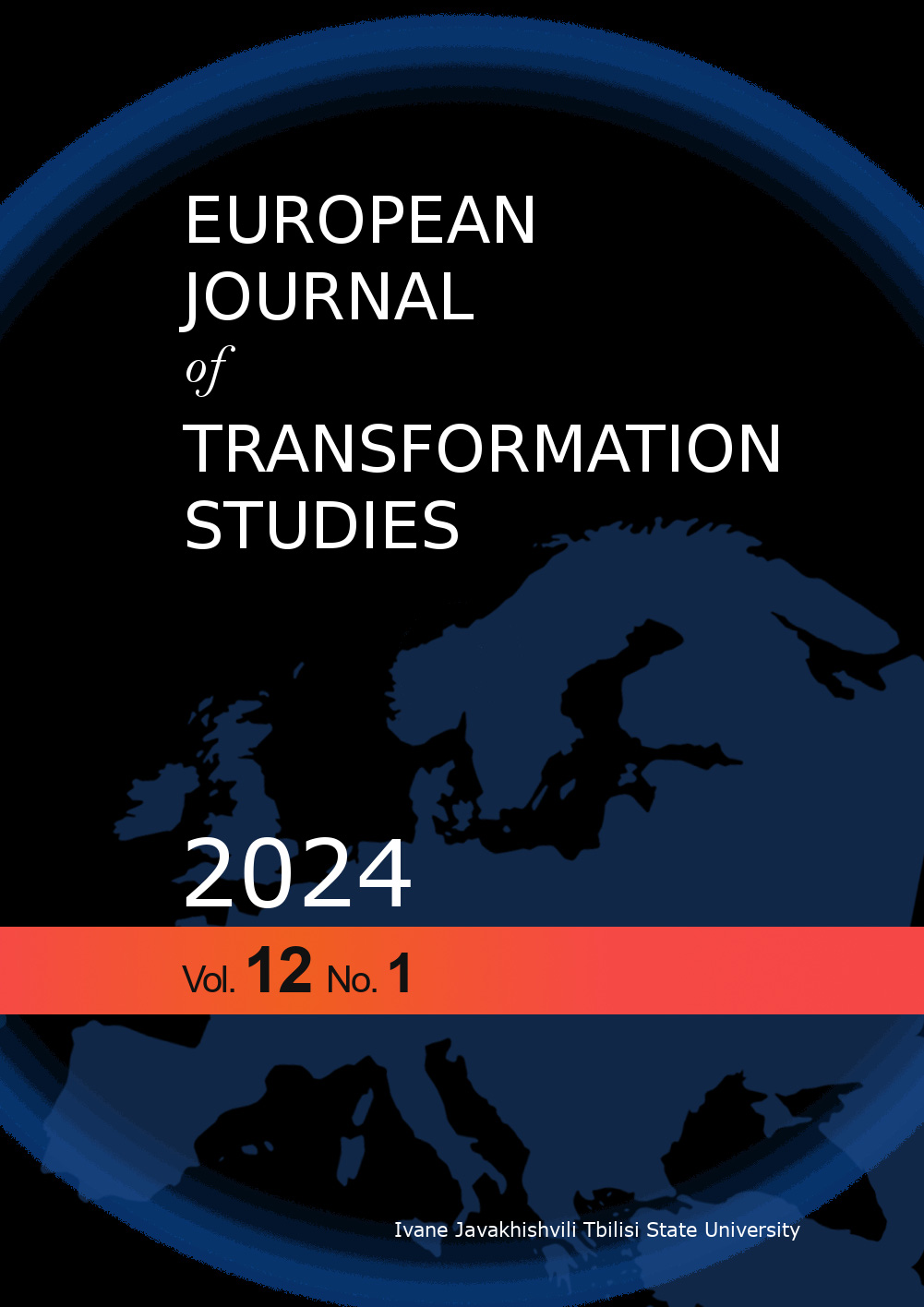The Impact Of The Mixed-Member System On Disproportionality In Election Results In Post Communist Countries: Hungary, Lithuania, Ukraine And Georgia
Keywords:
SMD and PR Components, legal threshold, linked and unlinked systems, disproportionality, wasted votesAbstract
The article studies mechanical effects of the mixed-member electoral system on disproportionality – the difference between votes gained by parties and their shares of seats – in four post-communist countries in Europe: Georgia, Hungary, Lithuania, and Ukraine. The article relies on the quantitative analysis of 32 elections, including those held in 2024. The study indicates that the role of the majoritarian component is more significant in increasing the overall level of disproportionality. This in turn, is mostly due to overrepresented seats gained by the winning parties. On the other hand, high level of legal threshold in the PR component raises the level of disproportionality, which is also reflected in a total indicator. In this regard, votes gained by parties that fail to meet the threshold also influence the level of disproportionality. Moreover, the study reveals that the elections held under the linked (compensatory) mixed-member system exhibited lower level of disproportionality than the ones held under the unlinked (parallel) system.
Downloads
References
Bedock, C., (2017), When electoral competition determines disproportionality: Majority bonus and regional elections in France and Italy, Retrieved November 25, 2024, from: https://www.researchgate.net/publication/317901937.
Blondel, J., (1969), An introduction to comparative government, Weidenfeld and Nicolson, London.
Bochsler, D., Bernauer, J., (2014), Strategic incentives in unconventional electoral systems: Introduction to the special issue, in Representation, 50(1), 1–12.
Cox, G., (1997), Making votes count, Cambridge University Press, Cambridge.
Gallagher, M, (1991), Proportionality, disproportionality and electoral systems, in Electoral Studies, 10(1), 33–51.
Gallagher, M., Laver, M., Mair, P., (1995), Representative government in modern Europe, McGraw Hill, New York.
Gallagher, M., & Mitchell, P., (2005), The politics of electoral systems, Oxford University Press, Oxford.
Jones, M. P., (1993), The political consequences of electoral laws in Latin America and the Caribbean, in Electoral Studies, 12(1), 59–75.
Lijphart, A., (1994), Electoral systems and party systems: A study of twenty-seven democracies, 1945–1990, Oxford University Press, Oxford.
Lijphart, A., (1997), The difficult science of electoral systems: A commentary on the critique by Alberto Penadés, in Electoral Studies, 16(1), 73–77.
Lijphart, A., (2003), Degrees of proportionality of proportional representation formulas, in B. Grofman & A. Lijphart (Eds), Electoral laws and their political consequences (170–179), Agathon Press, New York.
Loosemore, J., & Hanby, V. J., (1971), The theoretical limits of maximum distortion: Some analytic expressions for electoral systems, in British Journal of Political Science, 1(4), 467–477.
Manow, P., (2011), The cube rule in a mixed electoral system: Disproportionality in German Bundestag elections, in West European Politics, 34(4), 773–94.
Massicotte, L., & Blais, A., (1999), Mixed electoral systems: A conceptual and empirical survey, in Electoral Studies, 18(3), 341–66.
Moraski, B., & Loewenberg, G., (1999), The effect of legal thresholds on the revival of former communist parties in East-Central Europe, in The Journal of Politics, 61(1), 151–170.
Moser, R. G., & Scheiner, E., (2004), Mixed electoral systems and electoral system effects: Controlled comparison and cross-national analysis, in Electoral Studies, 23(4), 575–99.
Norris, P., (1997), Choosing electoral systems: Proportional, majoritarian and mixed systems, in International Political Science Review, 18(3), 297–312.
Powel Jr, G. B., & Vanberg, G.S., (2000), Election laws, disproportionality and median correspondence: Implications for two visions of democracy, in British Journal of Political Science, 30(3), 383–411.
Rae, D. W., (1969), The political consequences of electoral laws, Yale University Press, New Haven.
Sartori, G., (1986), The influence of electoral systems: Faulty laws or faulty method? In B. Grofman, & A. Lijphart (Eds.), Electoral laws and their political consequences (43–68), Agathon Press, New York.
Shugart, M. S., & Wattenberg, M. P., (2001), Mixed Member electoral systems: A definition and typology, in M. S. Shugart, & M. P. Wattenberg (Eds.), Mixed Member electoral systems: The best of both worlds? (9–24), Oxford University Press, Oxford.
Taagepera, R., & Shugart, M. S., (1989), Seats and votes: The effects and determinants of electoral systems, Yale University Press, New Haven.

 Academic Scientific Journals
Academic Scientific Journals



